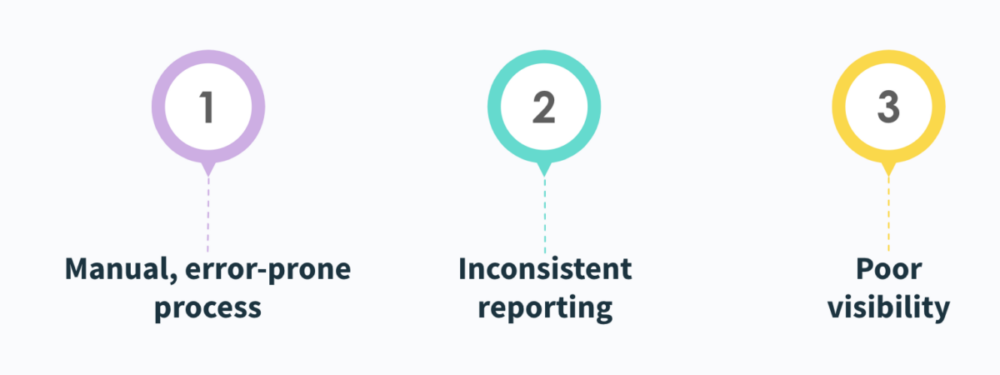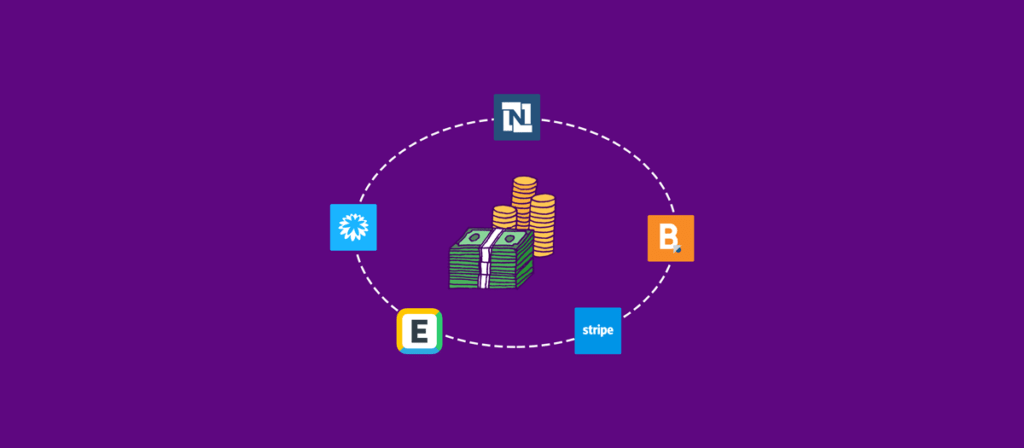Is your accounts payable process filled with manually burdensome steps?
Individual tasks, like reminding colleagues to sign an invoice or transferring invoicing data to your accounting system, may not seem like much on their own. But when you add them up, they translate to a process that’s time consuming, unpleasant to perform, and vulnerable to significant errors.
You can address this directly by using accounts payable automation (also known as AP automation or accounts payable process automation).
We’ll walk you through more specific benefits from using this type of finance automation, as well as how, exactly, you can implement it. But first, let’s review what it is.
Related: An overview on payroll automation
What is Accounts Payable Automation?
Simply put, it’s the use of automation to streamline end-to-end accounts payable processes.
To execute it, you’ll need to use a platform that can listen to your apps for specific business events (triggers). Once a business event occurs, the platform can then deliver real-time business outcomes (actions). For example, a trigger can be a procurement request for an asset, while a corresponding action can include creating a purchase order request form.
With this definition in mind, let’s explore why this type of automation is gaining popularity.
Related: Overview on cash reconciliation automation
3 Benefits of Accounts Payable Automation
According to research by MineralTree, the number of organizations that have implemented AP automation has gone up by 14 percentage points in just a year. In addition, over the next 2 years, another 20% of organizations plan to implement this type of automation.
Why are organizations turning to it in droves? It’s hard to pinpoint the main driver, but it solves 3 key challenges that organizations want to address:

1. It prevents you from performing a manually-burdensome process that’s vulnerable to errors.
As your organization scales, and you begin to work with dozens, if not hundreds, of vendors, it becomes increasingly difficult to manage invoicing manually.
You might forget to send a purchase order to certain internal stakeholders for review; you might forget to update an invoice’s status in the ERP once a payment is made; and you might even update an invoice’s status incorrectly.
Any of these mistakes can lead to late or inadequate payments, which hurts your relationship with vendors. On top of that, your team might be spending several hours every month manually inputting information across systems.
With accounts payable automation, you can avoid these mistakes and save a significant amount of time, as your team no longer has to perform many of the manual tasks themselves.
2. It lets you report with better accuracy and more thoughtful analysis.
When you don’t have a complete, up-to-date view on all your vendors, you can’t provide the type of reporting and analysis that leadership demands.
You can use accounts payable automation to track each of your vendors in a single platform. That way, your team will not only be in a position to provide error-free reporting, but they’ll also be able to allocate more of their time towards identifying ways to manage vendor relationships better (versus hopping between apps to find information).
3. It provides visibility across your vendor relationships.
When information around invoicing isn’t recorded in a way that’s accurate, timely, and visible, your colleagues in finance and in other departments simply can’t keep up-to speed on your AP data.
With accounts payable automation, you can help anyone in your organization proactively and independently keep tabs on vendors’ or partners’ invoices, whether it’s an accounts payable specialist or a sales enablement manager.
Related: How to automate invoicing
How to Automate Accounts Payable
Now that you know what accounts payable automation is as well as why it’s important, you’re ready to learn how you can implement it.
Here’s a breakdown of each step:
1. Identify all the applications you use throughout the accounts payable process. Then map out how you’d like the data to flow between them.
2. Present the systems you’d like to connect and how you’d like them to communicate with each other to your colleagues in IT. They can then use your guidance to build the workflow automation quickly using an enterprise automation (EA) platform.
It’s worth noting that IT’s experience in implementing automations across other business lines can help them in spotting ways to automate a specific step in yours further; or, just as helpful, they might identify new automation opportunities within the workflow.
3. Once the automation is built, you can work quickly in testing it and in giving IT feedback if anything isn’t working.
Related: How Approval Bot empowered Tango Card to transform their vendor billing workflow
Accounts Payable Automation Example
Say you use the following apps to manage your procure-to-pay process.

You can use an EA platform to connect those two apps and build the following set of workflows:
- Whenever a new vendor is added or edited in NetSuite, Coupa instantly adds or edits them as a supplier.
- If a new or edited invoice is received in Coupa, the changes are automatically reflected in the corresponding NetSuite invoice.
- When Coupa creates or edits a purchase order, NetSuite automatically does the same.
- If a vendor payment is recorded in NetSuite, Coupa closes the purchase order.
Note: If any of the workflows don’t work, the EA platform can email the appropriate colleagues to help troubleshoot it.
For more on these workflows, you can visit this page.
Ready to build an error-free, streamlined accounts payable process? You can speak to one of our automation experts to find out how the leading enterprise automation platform, Workato, can help!
